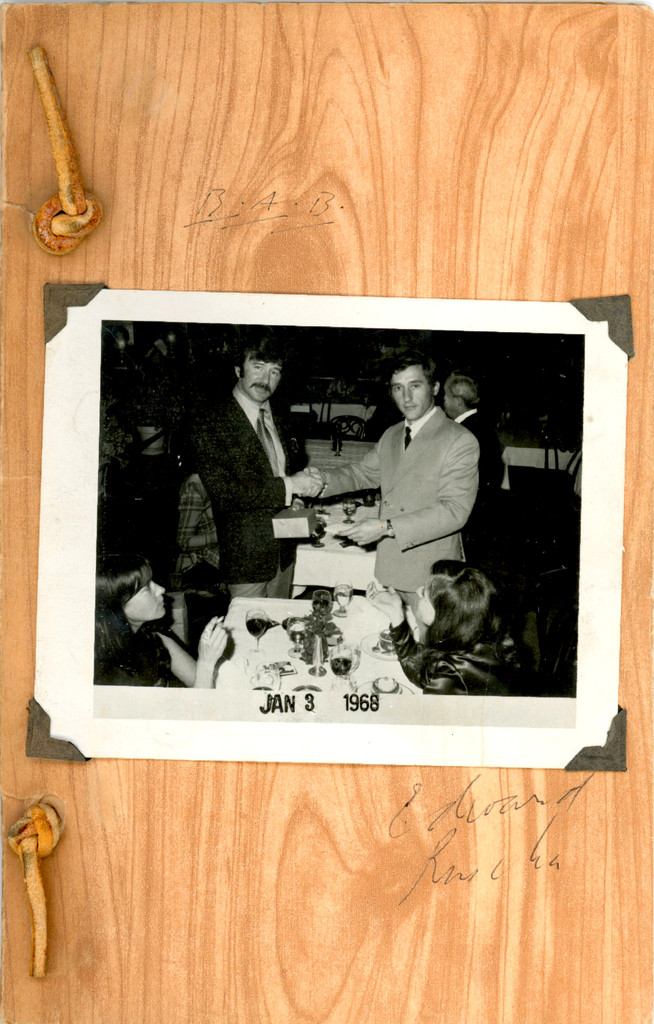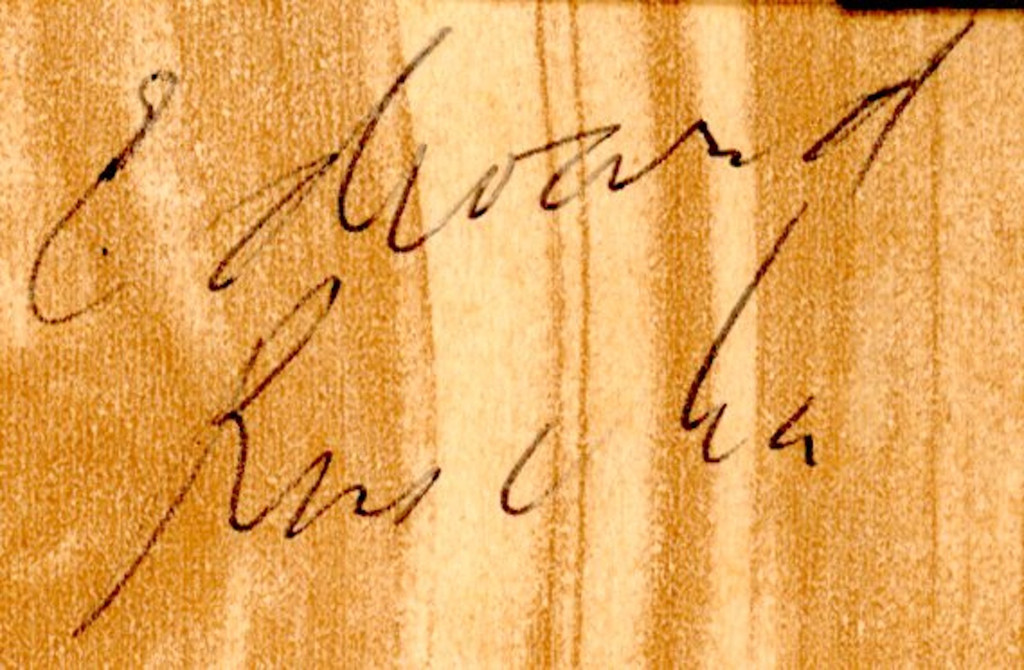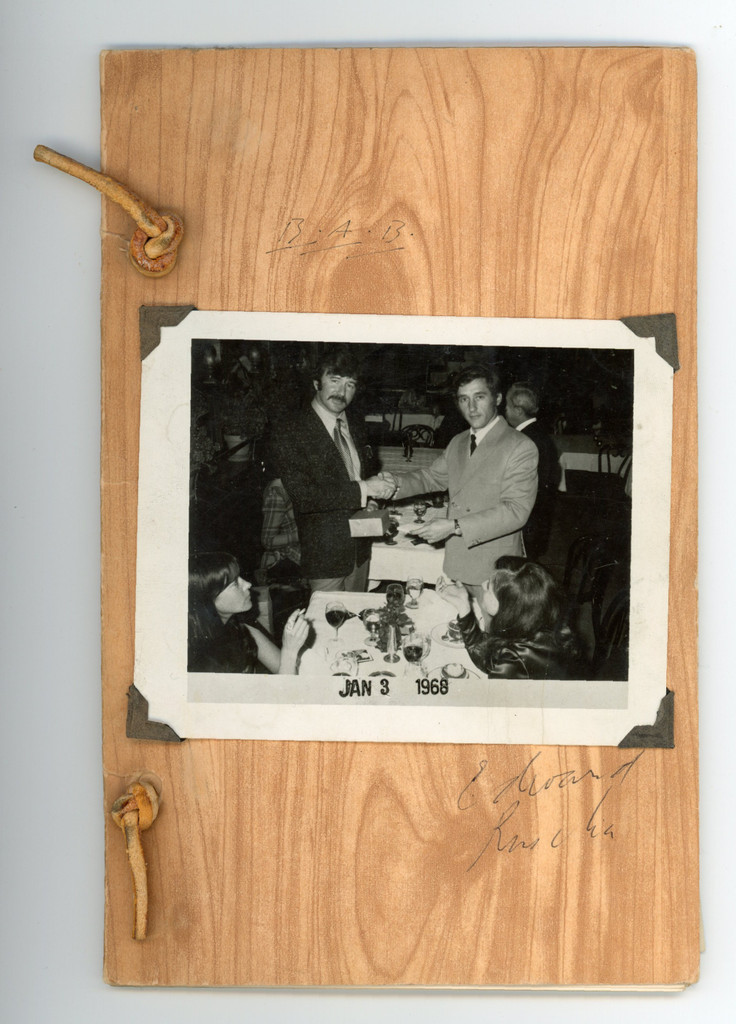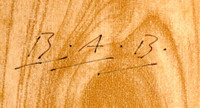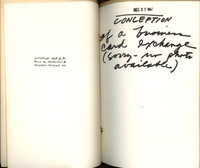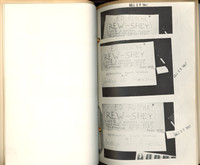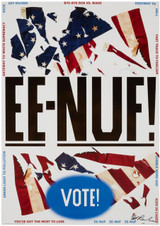
An Educated Collector is Our Best Client
In business for nearly two decades, we are a well established, popular contemporary art boutique specializing in expertly chosen, blue chip prints, multiples, uniques, books, ephemera and merchandise at different price points, with a focus on the secondary market. Please click on the "Contact Us" button at the bottom of this page for questions about any work, pricing and/or to arrange to visit our showroom/gallery - located in between Manhattan's Flatiron and Chelsea Flower Districts.
Ed Ruscha, Billy Al Bengston, Business Cards (hand signed by Ed Ruscha and Billy Al Bengston), 1968
CONTACT GALLERY FOR PRICE
Description
Ed Ruscha, Billy Al Bengston
Business Cards (hand signed by Ed Ruscha and Billy Al Bengston), 1968
Mixed Media Artist's Book: Softback monograph with a latigo leather thong, silver gelatin photograph and cards stapled to the the recto of the rear leaf
Hand signed on the cover by Billy Al Bengston and Ed Ruscha
8 3/4 × 5 3/4 inches
Unframed
This is the famous, historic 1968 samizdat artist book collaboration between two beloved California artists: Ed Ruscha and Billy Al Bengston - hand signed by both on the cover.
Media: Offset on paper with business card and gold-backed paper stapled on final page; punched and tied with leather cord with silver gelatin print and photo corners adhered to wood-grained Bristol board
About the book:
First edition published in 1968. SIGNED by Edward Ruscha and Billy Al Bengston on front cover. Fine in paper covers simulating polished wood grain, with monochromatic photographic plate showing both of these handsome young artists shaking hands set-in brackets. Thin rawhide straps bind the contents. 32 pages with black and white illustrations and 2 stapled "business cards" - one being Bengston's card and one being a photograph of Bengston's design of Ruscha's card - the subject and title. Early artist's book limited to 1000 copies.
About Ed Ruscha:
There are things that I’m constantly looking at that I feel should be elevated to greater status, almost to philosophical status or to a religious status. That’s why taking things out of context is a useful tool to an artist. It’s the concept of taking something that’s not subject matter and making it subject matter.
—Ed Ruscha
At the start of his artistic career, Ed Ruscha called himself an “abstract artist ... who deals with subject matter.” Abandoning academic connotations that came to be associated with Abstract Expressionism, he looked instead to tropes of advertising and brought words—as form, symbol, and material—to the forefront of painting. Working in diverse media with humor and wit, he oscillates between sign and substance, locating the sublime in landscapes both natural and artificial.
In 1956, Ruscha moved from Oklahoma City to Los Angeles, where he attended the Chouinard Art Institute. During his time in art school, he had been painting in the manner of Franz Kline and Willem de Kooning, and came across a reproduction of Jasper Johns’s Target with Four Faces (1955). Struck by Johns’s use of readymade images as supports for abstraction, Ruscha began to consider how he could employ graphics in order to expose painting’s dual identity as both object and illusion. For his first word painting, E.Ruscha (1959), he intentionally miscalculated the space it would take to write his first initial and surname on the canvas, inserting the last two letters, HA, above and indicating the “error” with an arrow. After graduation, Ruscha began to work for ad agencies, honing his skills in schematic design and considering questions of scale, abstraction, and viewpoint, which became integral to his painting and photography. He produced his first artist’s book, Twentysix Gasoline Stations—a series of deadpan photographs the artist took while driving on Route 66 from Los Angeles to Oklahoma City—in 1963. Ruscha since has gone on to create over a dozen artists’ books, including the 25-foot-long, accordion-folded Every Building on the Sunset Strip (1966) and his version of Kerouac's iconic On the Road (2009). Ruscha also paints trompe-l’oeil bound volumes and alters book spines and interiors with painted words: books in all forms pervade his investigations of language and the distribution of art and information.
Ruscha’s paintings of the 1960s explore the noise and the fluidity of language. With works such as OOF (1962–63)—which presents the exclamation in yellow block letters on a blue ground—it is nearly impossible to look at the painting without verbalizing the visual. Since his first exhibition with Gagosian in 1993, Ruscha has had twenty-one solo exhibitions with the gallery, including Custom-Built Intrigue: Drawings 1974–84 (2017), comprising a decade of reverse-stencil drawings of phrases rendered in pastel, dry pigment, and various edible substances, from spinach to carrot juice. The first retrospective of Ruscha’s drawings was held in 2004 at the Whitney Museum of American Art. Ruscha continues to influence contemporary artists worldwide, his formal experimentations and clever use of the American vernacular evolving in form and meaning as technology and internet platforms alter the essence of human communication. Ruscha represented the United States at the 51st Venice Biennale (2005) with Course of Empire, an installation of ten paintings. Inspired by nineteenth century American artist Thomas Cole’s famous painting cycle of the same name, the work alludes to the pitfalls surrounding modernist visions of progress. In 2018 Ruscha’s Course of Empire was presented concurrently with Cole’s at the National Gallery in London.
Courtesy of Gagosian
About Billy Al Bengston:
b. 1934 in Dodge City, Kansas
Working in both painting and sculpture, Billy Al Bengston is known for his psychedelically colorful works. He is also a motorcycle racer, surfer, and has a penchant for the sublime rather than perfection.
He studied at the California College of Arts and Crafts where he developed a radical aesthetic, which, combined with his already highly developed skills, taxed the faculty to such an extent that they asked him to leave after only one year. After moving to Los Angeles, Bengston began showing at the famed Ferus Gallery and established himself as part of a group that rejected the stereotype of the artist as a tormented individual.
Bengston is represented in many important public collections including The Museum of Modern Art, NY; Solomon R. Guggenheim Museum, New York; the National Gallery of Art in Washington D.C.; Whitney Museum of American Art in New York; the Art Institute of Chicago; the Los Angeles County Museum of Art; and the Centre Pompidou in Paris, France.
Publisher
Billy Al Bengston & Ed Ruscha, Inc.

